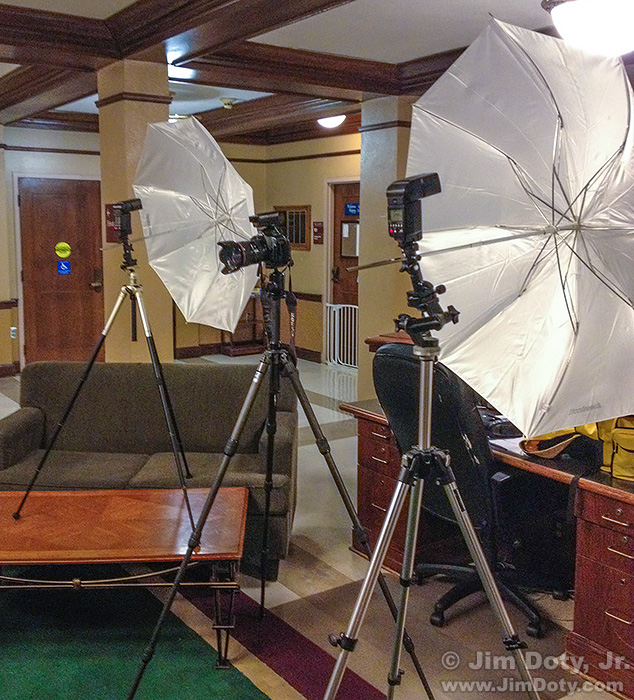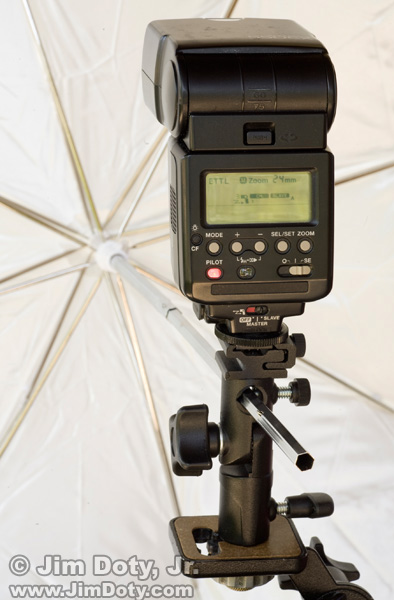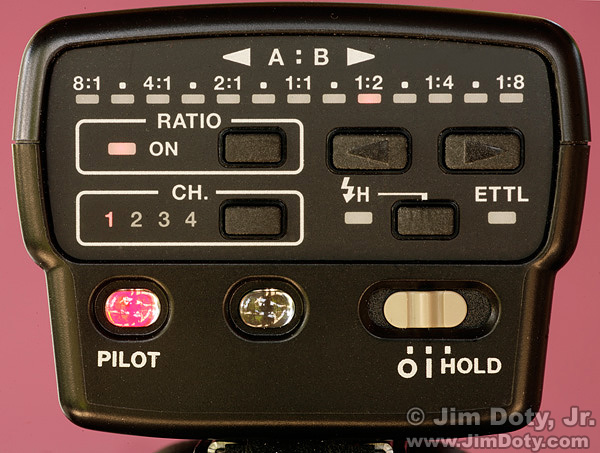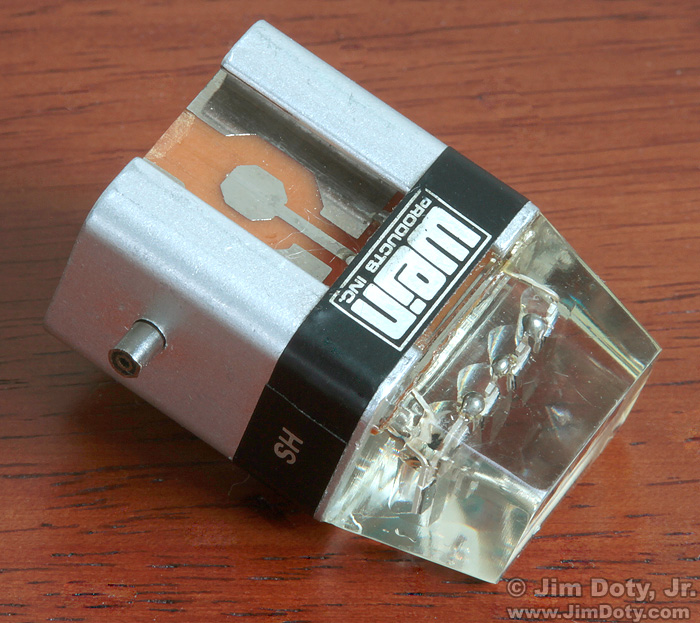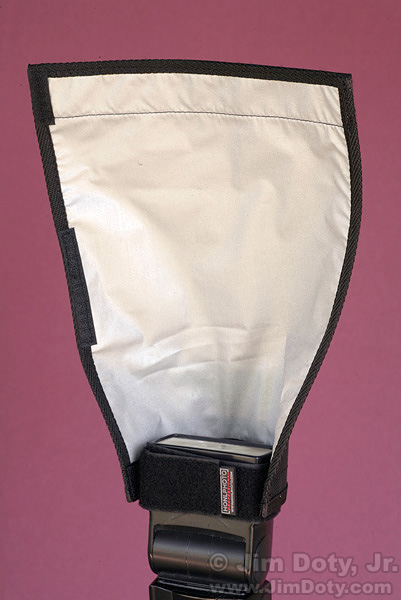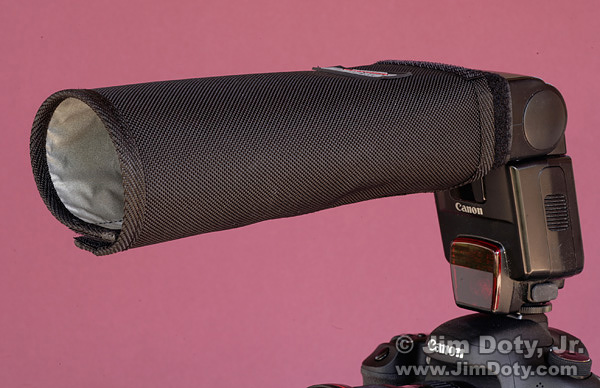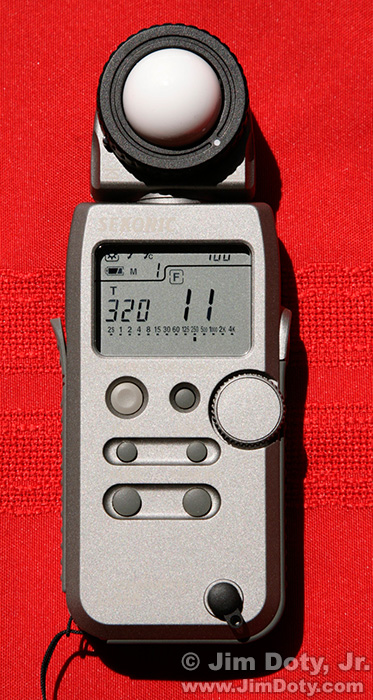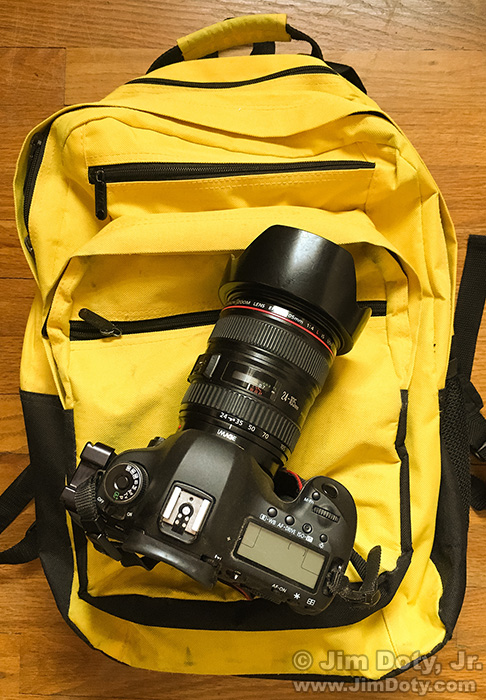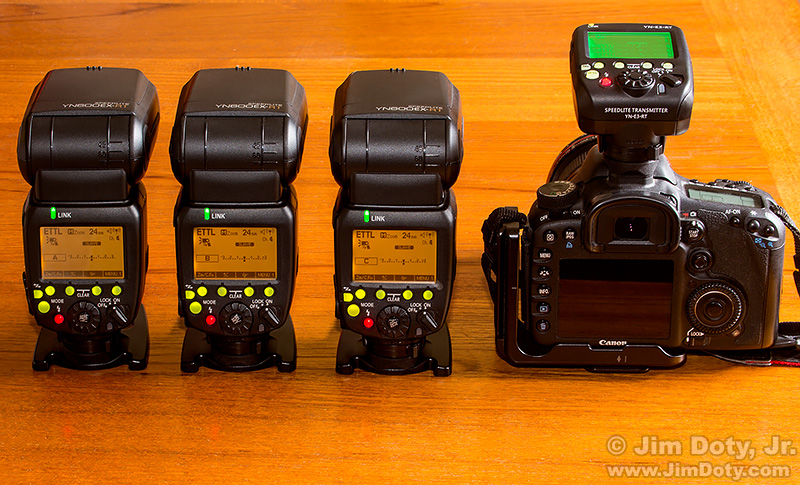If I am visiting family and friends and traveling by car, I usually bring my “studio in a backpack”. I never know when I might be asked to do some portraits and having some studio gear along helps create better images (especially when natural light is not a very good option). If you want to do portraits on the road (or even at home), these items are very useful. You can order these items from Amazon via the link at the end of this article.
At home I have a full complement of studio flash units, stands, light modifiers, a full size back drop stand, and several backdrops. But all of that stuff is way to cumbersome to take along on a trip. So I have a minimal amount of alternate studio gear that I take on family trips and it all fits in one backpack. If you don’t have a full complement of studio flash units this studio in a backpack is a way to get started without spending a fortune. If you already have a hot shoe mount speedlite and a tripod, you have a good start toward your own studio set up.
Instead of full size studio flash units, I take two or three Canon 550EX speedlites (which I bought used) . They have built in infrared communication with automatic flash exposure. You can put one on your camera and set the switch to “master” and set one or more off camera units to “slave” and the master flash will control the others. I like the convenience of the master/slave switch on the back of the flash which is quick and simple to use and doesn’t require digging through a menu system. You have automatic, through-the-lens flash exposure and you can change the power ratio between the flash units. More recent Canon speedlites would work just as well, but you have to dig through the menu system.
I also carry the Canon ST-E2 Speedlite Transmitter. With this infrared transmitter in the camera’s hotshoe I can control all of the off camera flash units and have through-the-lens automatic flash metering plus power ratio control..
Infrared does have some limitations. The communications distance is limited to about 25 feet (sometimes less), and all the units must have line of site communication. Infrared does not work well outside in bright sunlight. (See the radio control section at the end of this article.)
To soften the light I have two collapsible umbrellas. These 43 inch umbrellas (photo at the top) collapse down to a very small 2 inches in diameter by 14 1/2 inches long. I also have two umbrella adapters for mounting the umbrellas and flashes on tripods.
There is a very small, portable Velbon tripod with ball head in my studio backpack (it is no longer manufacturered). I could add one or two more of these to my backpack, but I usually have two normal size tripods with me. Two tripods hold the flash units and the third holds the camera. This is handy in case I need to use the camera’s self timer to be in a group photo.
In situations where infrared communication is iffy, as a backup system I have two Wein optical slaves to fire the flash units. They work at a considerable distance but there is no automatic flash exposure. The flash units have to be used in manual exposure mode.
For the times I don’t need the softening power of an umbrella, I carry Sto-fen flash diffusers.
As another option to soften the light I carry a Honl Reflector with Speed Strap.
The Honl reflector can also be rolled up and used as a snoot to shoot a narrow beam of light. Another option to Honl is the Rogue line of FlashBenders.
When working with manual flash, it is helpful to have an incident flash meter. I carry the Sekonic L-358 flash meter. This excellent meter is no longer in production (it can be purchased at Amazon on the aftermarket), but there are other excellent flash meters out there. If you don’t have an incident light meter you can use your camera’s histogram to check a studio flash exposure.
In my backpack I carry two dark pieces of cloth that I can use as a backdrop for individual portraits or small groups. For large groups I have to find some kind of natural background.
If you get asked to do portraits when on the road visiting family and friends, a studio in a backpack may be just the ticket for you too. You may already have several of the items you need, like a tripod or flash.
Except for the two large tripods, everything collapses down to fit in this yellow backpack.
Radio Controlled Flash Units
After using infrared and optical flashes for years, I finally decided to try radio controlled speedlites when I found the remarkably inexpensive Youngnuo system. They are totally compatible with Canon gear. As of the update of this article (Dec. 5, 2016), the speedlites are $114 and the radio transmitter is $87.00. Radio controlled flashes and transmitters have a longer working range than infrared (about 100 feet), do not require line of sight between the units, and they work well in bright sunlight. My Yongnuo review is here.
Article Link: Off-Camera Flash Series
“How To†Series: Off-Camera Flash – Series Introduction
Purchase Links
The items in my studio backpack can be found in the Light Modifiers, Flashes and Accessories section of my photography store with direct links to Amazon.com. You get Amazon’s great prices, service, and guarantee.
Buyer’s Guide Series Link
This is one in a series of articles that will guide you to the best of all things photographic. The rest are here: Buyer’s Guide: Recommendations For The Best Photography Equipment, Software, Books, Magazines, DVDs, Online Photo Labs and More.

